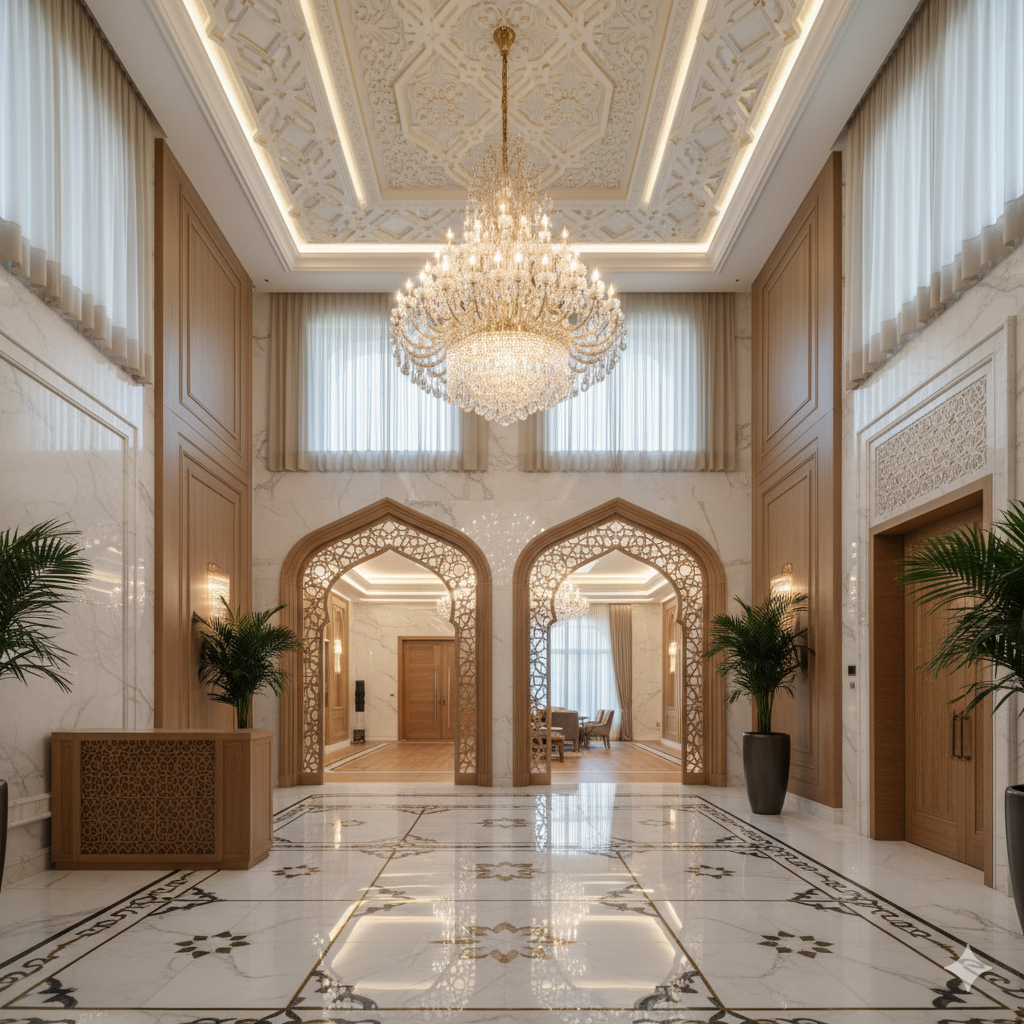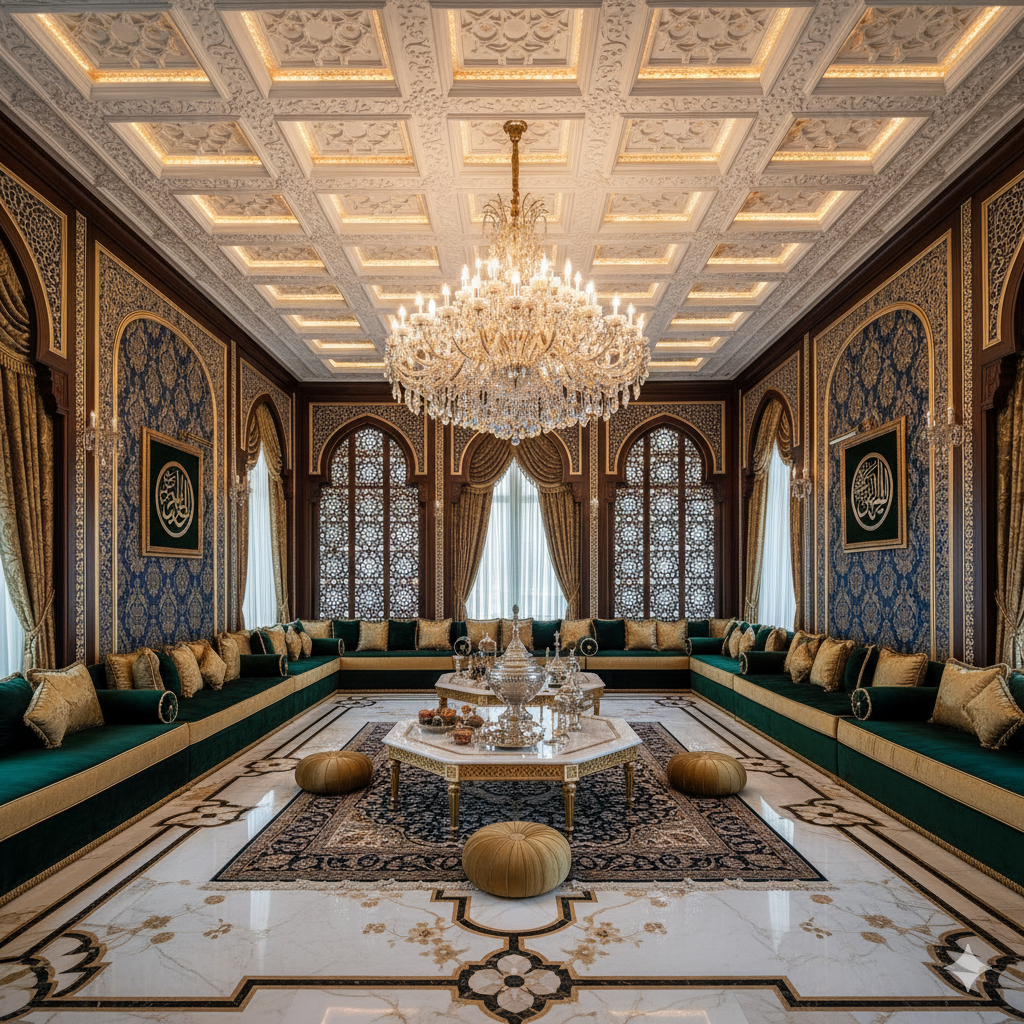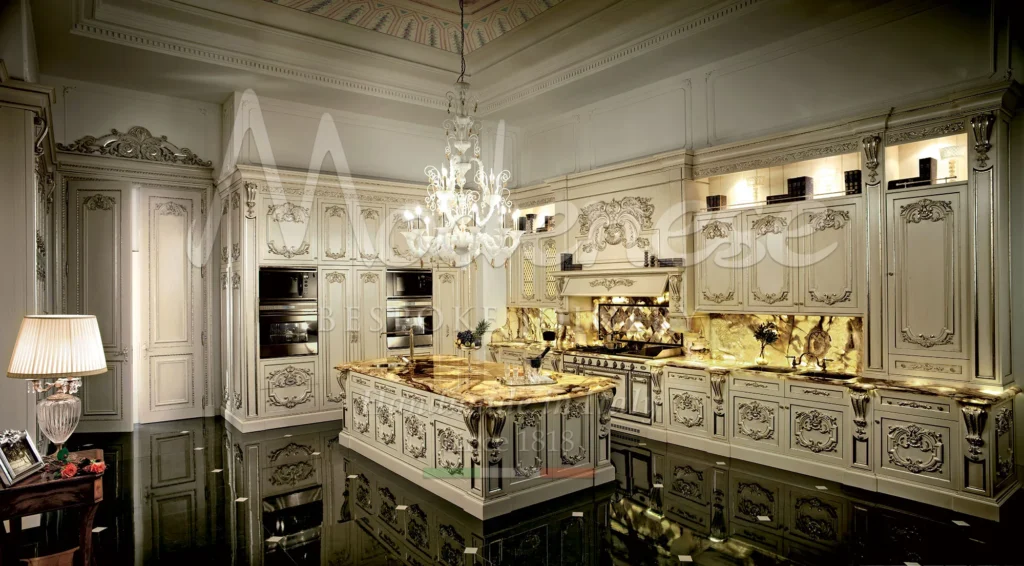In Gulf culture, hospitality isn’t just a courtesy—it’s a deeply rooted tradition that shapes every aspect of residential architecture and interior design. Creating spaces that honor guests while maintaining family privacy requires thoughtful planning, cultural awareness, and expert execution. Antonovich Design, recognized as the best modern interior design company for villas in Dubai, understands that successful Gulf homes must balance grandeur with intimacy, tradition with contemporary luxury, and formal entertaining spaces with comfortable family zones.

Understanding Gulf Hospitality Architecture
The architectural DNA of Gulf homes revolves around the principle of generous hospitality. Unlike Western open-plan living, traditional Gulf residences create distinct zones that separate public entertaining areas from private family spaces. This cultural framework ensures that homeowners can welcome guests with impressive formality while preserving sanctuaries for daily family life.
Modern Gulf villas continue this tradition through sophisticated spatial planning. The entrance sequence typically flows through a grand foyer directly to guest reception areas, while family spaces remain accessed through separate circulation paths. This dual-zone approach reflects centuries of cultural practice adapted for contemporary lifestyles.
Guest Majlis vs. Family Living Areas: Designing Dual Zones
The Formal Guest Majlis
The majlis serves as the heart of Gulf hospitality—a dedicated space designed exclusively for receiving guests. Creating an impressive majlis requires attention to several key elements:
Scale and Proportion: Guest majlis areas typically span 60 to 100 square meters or more, with ceiling heights reaching 4 to 6 meters. These generous dimensions communicate respect for guests and provide the grandeur expected in formal Gulf entertaining.
Seating Arrangements: Traditional majlis seating follows perimeter arrangements with cushioned benches or contemporary sofas lining the walls. This configuration facilitates conversation while accommodating large numbers of guests. Modern interpretations incorporate modular seating systems that maintain traditional layouts with contemporary comfort.
Material Palette: Luxury materials signal the importance of guests. Marble flooring with intricate inlay patterns, ornate plasterwork ceilings, crystal chandeliers, and rich fabric wall treatments create an environment of refined elegance. Gold and bronze accents add warmth and opulence without overwhelming the space.
Cultural Details: Incorporating traditional design elements—geometric Islamic patterns, mashrabiya screens, Arabic calligraphy, and regional craftsmanship—connects the space to cultural heritage while demonstrating pride in Gulf identity.

The Private Family Living Area
While guest spaces emphasize formality, family living areas prioritize comfort, functionality, and relaxed elegance:
Intimate Scale: Family rooms typically feature more modest proportions with standard ceiling heights, creating cozy environments for daily activities. These spaces feel personal rather than ceremonial.
Flexible Furniture: Casual seating arrangements with movable furniture allow family members to reconfigure spaces for different activities—movie nights, homework sessions, or casual meals.
Technology Integration: Family zones incorporate entertainment systems, gaming areas, and smart home controls that would be inappropriate in formal guest spaces. Hidden storage solutions maintain clean aesthetics while accommodating the reality of family life.
Natural Light and Connection: Large windows, garden access, and softer lighting create welcoming environments for extended family time, contrasting with the more controlled lighting in formal majlis spaces.
Ramadan and Eid Entertaining Considerations
Gulf homes must excel during Ramadan and Eid celebrations when entertaining reaches its peak. Designing for these occasions requires specific considerations:

Ramadan Iftar Hosting
Flexible Dining Capacity: Homes need dining solutions that expand from everyday family meals to hosting 20 or more guests for iftar. Expandable dining tables, supplementary seating areas, and adjacent spaces that can transform into dining zones provide necessary flexibility.
Buffer and Serving Areas: Dedicated spaces near dining rooms for food preparation, buffet service, and coffee/tea stations become essential during Ramadan. Butler’s pantries or secondary serving kitchens prevent congestion in primary cooking areas while allowing discreet service.
Lighting Control: Adjustable lighting systems accommodate the transition from daylight fasting to evening celebration. Dimmable fixtures, layered lighting schemes, and decorative Ramadan lanterns create appropriate ambiance for different times of day.
Prayer Space Access: Convenient access to prayer rooms from entertaining areas allows hosts and guests to fulfill religious obligations without disrupting hospitality flow.
Eid Celebration Spaces
Grand Gesture Areas: Eid entertaining requires spaces that can accommodate large gatherings with impressive presentation. Open-plan configurations connecting multiple reception rooms, outdoor terraces, and courtyards allow seamless flow for dozens of guests.
Children’s Entertainment: Successful Eid hosting includes spaces where children can play safely while remaining within adult supervision. Secondary living areas, game rooms, or supervised outdoor zones keep younger guests engaged.
Gift Exchange Zones: Designated areas near entryways for gift presentation and reception acknowledge the tradition of Eid gift-giving while maintaining organized flow during busy celebration periods.
Extended Service Requirements: Additional powder rooms, coat storage, and parking considerations become crucial during Eid when guest numbers peak.
Formal Dining for Large Gatherings
The Statement Dining Room
Creating dining spaces capable of impressive formal entertaining requires careful planning:
Table Selection: Grand dining tables seating 12 to 16 guests establish the foundation for formal entertaining. Custom-made tables in premium materials—marble, exotic woods, or metal with glass—become sculptural centerpieces. Expandable options provide flexibility without compromising everyday aesthetics.
Seating Comfort: Upholstered dining chairs in luxurious fabrics ensure guest comfort during extended meals. Mix-and-match approaches with statement host chairs at table ends add visual interest while maintaining cohesion.
Overhead Drama: Dramatic chandeliers or sculptural lighting installations create focal points above dining tables. Scale matters—fixtures should be substantial enough to anchor large tables without overwhelming the space. Multiple pendants or linear installations suit contemporary rectangular tables.
Supportive Spaces: Formal dining rooms benefit from adjacent butler’s pantries, wine storage, and serving stations that support seamless hospitality without cluttering the dining experience.
Multi-Purpose Entertaining Configurations
Modern Gulf homes increasingly favor flexible entertaining solutions:
Connected Spaces: Formal dining rooms that connect to outdoor terraces, courtyards, or garden spaces through floor-to-ceiling glass doors expand capacity for temperate months. Retractable walls between dining and living areas create grand open spaces for exceptional occasions.
Alternative Dining Zones: Secondary dining areas—breakfast rooms, courtyard dining, or terrace spaces—provide options for different gathering sizes and formality levels. This variety prevents formal dining rooms from feeling underutilized while offering appropriate settings for various occasions.
Buffet and Station Dining: Built-in buffet zones with warming drawers, dedicated serving counters, and display areas support contemporary entertaining styles where guests serve themselves. This approach suits casual Ramadan iftars and informal Eid gatherings while maintaining elegance.

Design Elements That Elevate Hospitality Spaces
Architectural Features
Ceiling Design: Coffered ceilings, decorative moldings, and contemporary geometric treatments add architectural interest to entertaining spaces. Traditional gypsum plasterwork connects to heritage while modern interpretations suit contemporary villas.
Flooring Transitions: Distinct flooring materials—marble in formal areas, wood in family spaces, decorative tiles in transition zones—subtly demarcate different functional areas while maintaining visual flow.
Natural Light Management: While formal majlis areas often feature controlled lighting, strategic windows with privacy screening allow natural light without compromising cultural privacy requirements.
Color Psychology for Hospitality
Formal Spaces: Neutral palettes with rich accent colors—deep blues, emerald greens, burgundy, or gold—create sophisticated environments that photograph well and never tire. These colors convey luxury while remaining timeless.
Family Areas: Warmer tones and softer colors create inviting environments for daily living. Layers of texture through fabrics, rugs, and accessories add personality without the formality required in guest spaces.
Art and Accessories
Statement Art: Large-scale artwork, contemporary Arabic calligraphy, or commissioned pieces create conversation starters in formal areas while reflecting owner’s cultural pride and sophisticated taste.
Cultural Artifacts: Authentic regional crafts—Omani silver, Palestinian ceramics, Syrian woodwork—connect spaces to Gulf heritage while supporting traditional artisans.
Fresh Elements: Indoor plants, fresh flower arrangements, and water features add life to formal spaces. These elements require maintenance but demonstrate the care invested in creating welcoming environments.
Technology Supporting Modern Gulf Hospitality
Contemporary Gulf entertaining benefits from invisible technology integration:
Climate Control: Zoned HVAC systems allow precise temperature management in different areas. Formal majlis spaces may be pre-cooled before guests arrive, while family areas maintain comfortable settings for daily use.
Audio Visual Systems: Discrete speakers throughout entertaining spaces provide background music or Quran recitation during Ramadan without visible equipment disrupting aesthetics.
Smart Lighting: Programmed lighting scenes instantly transform spaces from daytime casual to evening formal. One-touch control panels near entrances allow hosts to set appropriate ambiance as guests arrive.
Security and Privacy: Integrated camera systems with discrete placement provide security while respecting guest privacy. Smart entry systems allow hosts to welcome guests without leaving entertaining areas.
Practical Considerations for Ultimate Hospitality
Storage Solutions
Successful entertaining requires strategic storage:
Seasonal Items: Dedicated storage for Ramadan decorations, additional serving pieces, and celebration-specific items keeps these organized between uses without cluttering daily spaces.
Extra Seating: Climate-controlled storage areas house supplementary chairs, floor cushions, and folding tables that expand capacity when needed.
Service Equipment: Coffee and tea service sets, large serving platters, and specialty entertaining pieces need accessible storage near serving areas.
Maintenance and Longevity
High-traffic entertaining spaces require durable materials:
Stain-Resistant Fabrics: Performance textiles that resist spills and staining make sense for dining chairs and majlis seating that will see intensive use during celebrations.
Durable Flooring: Porcelain tiles that replicate marble appearance offer similar aesthetics with superior stain resistance and easier maintenance than natural stone.
Protected Surfaces: Glass table protectors, removable table pads, and protective treatments for wood surfaces preserve investment pieces while allowing confident use.
Conclusion: Designing for Generous Living
Creating hospitality-centered homes in the Gulf region requires balancing multiple objectives—honoring cultural traditions while embracing contemporary luxury, providing impressive formal spaces while maintaining comfortable family zones, and designing for spectacular occasions while ensuring daily functionality.
The most successful Gulf residences don’t simply allocate space for entertaining; they create environments where hospitality flows naturally, where guests feel genuinely honored, and where families can celebrate their heritage while living modern lives. Through thoughtful spatial planning, appropriate material selection, and attention to cultural nuances, Gulf homes become settings for the generous hospitality that defines the region’s social fabric.
Whether planning extensive renovations or building new villas, homeowners who prioritize these hospitality-centered design principles create residences that serve as proud stages for the grand gesture of Gulf welcoming—spaces where every detail communicates respect, every room anticipates needs, and every celebration becomes a cherished memory.

